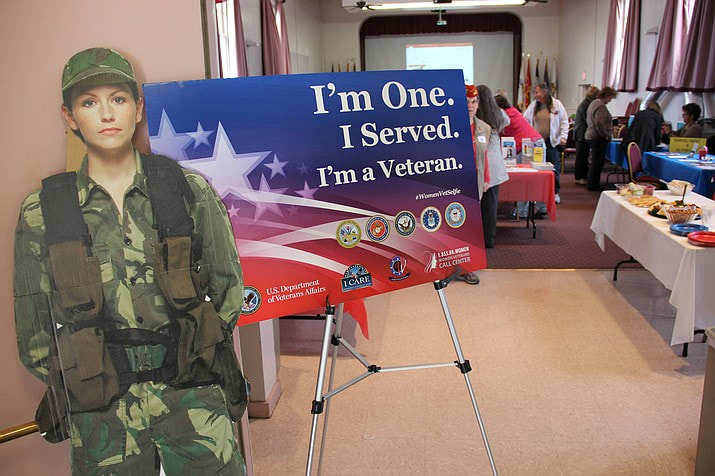As more women serve, more need care post-service
Beltran Steele joined the U.S. Marine Corps at a time when women were just starting to be recognized as a permanent part of the military service.
It was 1950, only two years after Congress passed the Women’s Armed Services Integration Act. The law permitted women to serve as full members of the U.S. armed forces. The positions open to them, however, were severely limited.
“I went in hoping I would get combat training, but in those days it was clerk typist or mechanic,” Steele said. “So while my brothers were in Korea, I was at a supply depot in San Francisco.”
Additionally, as part of the legislation, women could only make up 2 percent of the enlisted force and 10 percent of officers. This limit wasn’t repealed until 1967; and it wasn’t until the military transitioned to an all-volunteer force in 1973 that woman began to see a dramatic increase in the number of military roles they could take on. Even today, women are still striving to fill positions within the military never before held by them.
As it does annually, the Northern Arizona VA Health Care System (NAVAHCS) took the time on Tuesday, March 20, to review this history during an event designed to honor female veterans and those currently serving.
Steele, 86, was one of the attendees of the event. She – as well as every other female veteran in the room – was allotted time to share some of her experience serving in the armed forces.
A key point brought up during the event was that the proportion of women veterans is steadily increasing, and will continue to increase for decades to come.
“Even though there are more males than females in the military, the female curve is going up, whereas the male curve is declining, because a lot of our male veterans are older, and a lot of our female veterans are younger,” said Susan Johnson-Molina, the women veterans program manager at NAVAHCS, at the event.
According to a 2017 Women Veterans Report released by the Department of Veterans Affairs, woman made up 9.4 percent of the Veteran population in 2015. By 2042, that percentage is expected to be at about 16.3.
As this trend plays out, the VA is hoping to meet the needs of those female veterans.
“It’s such an exciting time for the female veteran,” Johnson-Molina said. “But, we also have to be there for female veterans as they come back out. Since they’re going to be experiencing more; it’s going to have more effects on them. We need to be aware of that.”
To help transition this new generation of warriors into the care they need, Johnson-Molina encourages today’s experienced veterans to serve as guides.
“As female veterans, you need to reach out to the younger ones,” Johnson-Molina said. “You don’t have to pitch the VA, but at least make them aware of our services.”
While veterans aren’t the only ones who suffer from ailments related to mental illness, physical debilitation or trauma, their population is highly prone to these issues, Johnson-Molina said.
“Military sexual trauma; big one,” she said. “One out of every four females suffer from military sexual trauma; and we know the number’s a lot higher. That’s just the ones that have come forward to say that. Woman are just starting to find the voice to speak about it.”
By Max Efrein
Originally Published: March 23, 2018 5:55 a.m.


 RSS Feed
RSS Feed
